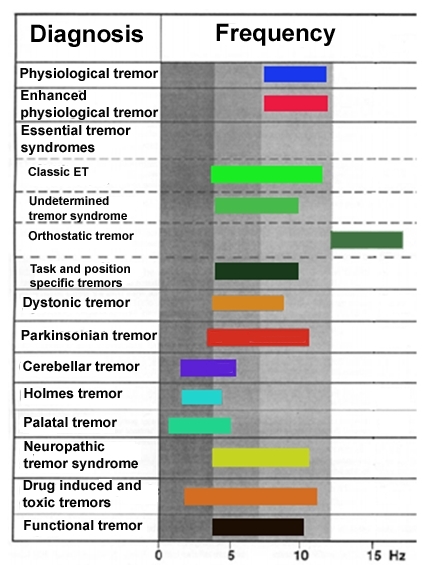Frequency of tremor often varies with the site of measurement and type of action, and is also affected by age: the frequency of ET, for example, decreases with advancing age. However, serial recordings have demonstrated that tremor frequency is stable in patients with a central oscillator, such as PD and ET.
Recording frequency of tremor is not very useful, largely since there is considerable overlap in frequency between the various tremor syndromes. The exceptions to this are in Holmes’ tremor and cerebellar tremor where frequency recording may be useful, but is usually unnecessary since the tremor frequency is manifestly slow.
However, frequency recording is particularly useful in orthostatic tremor.
There is significant overlap of frequency and amplitude between ET and PD, and between PD and dystonic tremor.

Comparison of frequency amongst various tremor types1

Comparison of frequency and amplitude amongst various tremor types.
Green is SWEDD (Scans Without Evidence of Dopaminergic Deficit), DYS = Dystonia2.

